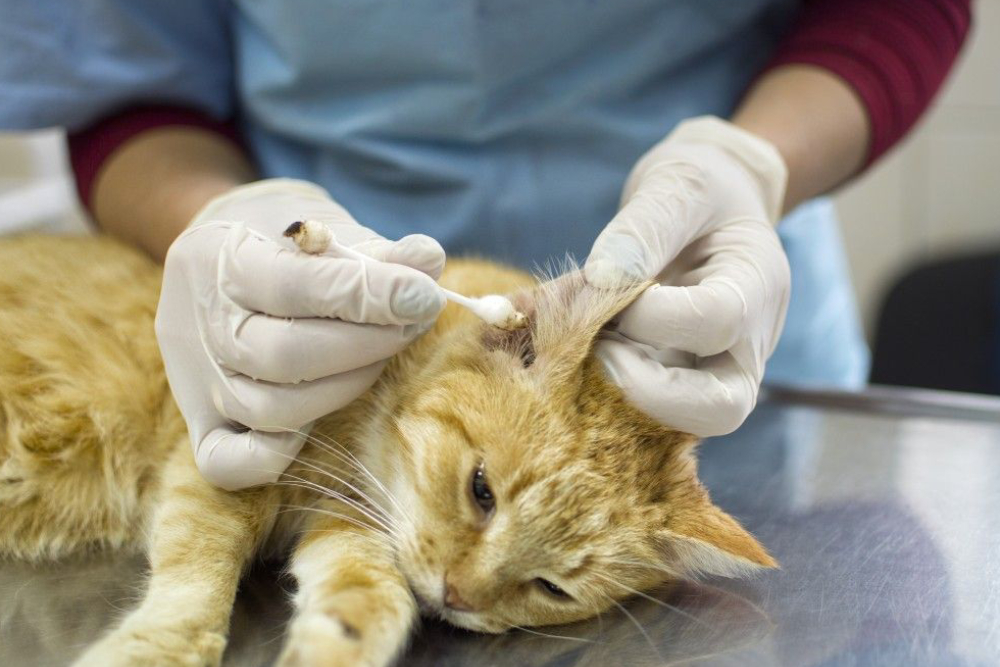
Ear Mites in Cats
Ear mites in cats are tiny parasites that live in the internal and external ear canals. They feed on wax and oils in a cat’s ear canal causing irritation and inflammation, and are responsible for more than 50% of feline ear infections. The infection usually causes a dark brown to black discharge commonly reported to look like coffee grounds. The mites are very tiny and often are not detected by the human eye. Ear mites are highly contagious and are passed from casual contact with other pets. Although both dogs and cats can have ear mites, cats are much more likely to be infected with them. Some of the symptoms of ear mites include:Brown or black waxy discharge (resembling coffee grounds)Head shakingExcessive scratching of the earsScratches, scabs or hair loss near earsOdorInflammation Due to the intense scratching and head shaking ear mites cause sometimes blood vessels inside the ear rupture causing an aural hematoma. This is a localized collection of blood that gets trapped between the skin and cartilage of the ear. To diagnose ear mites in cats, your vet will look at a sample of the wax within the ear under a microscope.
This is called an ear cytology. If mites are present they can normally be seen this way. In some cases, the eggs of the mites can also be seen. There are several treatments available for ear mites. The use of a prescription topical ear medication called Tresaderm is able to kill the developing ear mite eggs. It contains an antibiotic for any secondary bacterial infections along with a medication for inflammation. The recommended course of treatment with Tresaderm is 10-14 days. A follow-up ear cytology after treatment is usually recommended to ensure that the infection has cleared. There are also two products (Acarexx and Milbemite) which are applied directly in the ear canal. A single dose of these medications is usually all that is needed to clear the infection. Revolution and Advantage Multi are two topical products that are applied between the cat’s shoulders. These products also control fleas and multiple other parasites. These products should be applied once a month, every month, for the cat’s entire lifetime. To prevent a reinfection of ear mites in cats, it is important to treat all animals in the household and to have all animals on a monthly preventative. A routine check of your cat’s ears will also alert you to an early infection. You may also want to consider thoroughly cleaning all bedding and vacuuming your carpet.


